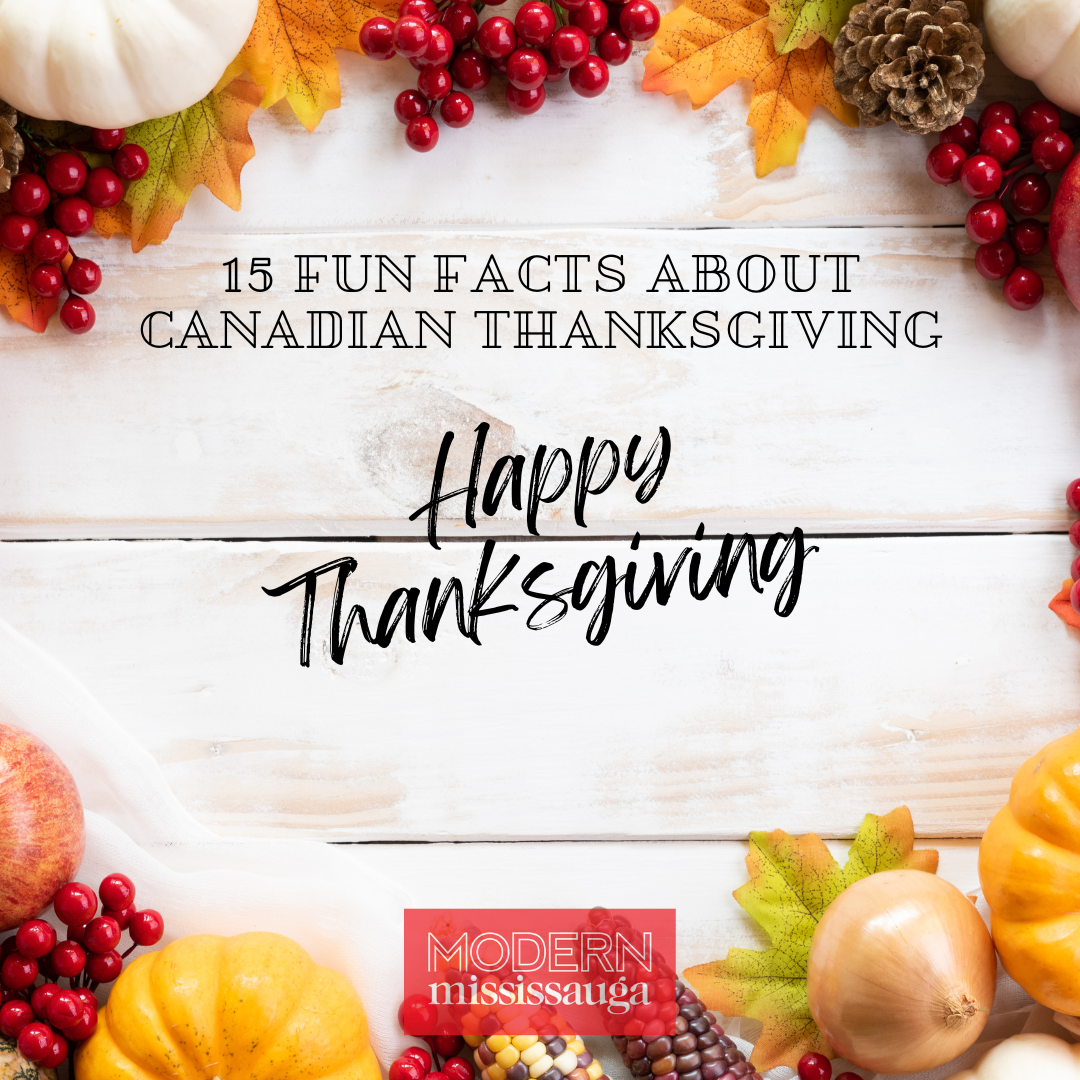15 Fun Facts About Canadian Thanksgiving
/Updated September 2024
As we get ready for another Canadian Thanksgiving, Modern Mississauga Media is thoroughly thankful for having the support of our readers, advertising partners, friends and family.
Here are 15 fun and interesting pieces of information and trivia about Canadian Thanksgiving for you to read and share.
Happy Thanksgiving, friends!
Quebec calls Thanksgiving "Action de grâce."
We've celebrated Thanksgiving in Canada for 145 years, starting in November 6, 1879.
Prior to 1957, Canada celebrated Thanksgiving on the third Monday of October. It officially moved to the second Monday of October via an announcement on January 31, 1957 by the Governor General of Canada.
The United States celebrates their Thanksgiving on the fourth Thursday in November and ours is in October as it gets colder earlier and therefore, our harvest season is earlier.
It was originally celebrated as a day of giving thanks for the blessing of the harvest and of the preceding year.
The first Canadian Thanksgiving is said to have traced back to 1578 with explorer Martin Frobisher. He had been trying to find a northern passage to the Pacific Ocean and held his Thanksgiving celebration not for harvest but in thanks for surviving the long journey from England through the perils of storms and icebergs. On his final voyage to the far north, Frobisher held a formal ceremony in Frobisher Bay in Baffin Island (present-day Nunavut) to give thanks to God and in a service ministered by the preacher Robert Wolfall they celebrated Communion.
Alternatively, some say that the origins of Canadian Thanksgiving are also sometimes traced to the French settlers who came to New France with explorer Samuel de Champlain in the early 17th century, who celebrated their successful harvests. The French settlers in the area typically had feasts at the end of the harvest season and continued throughout the winter season, even sharing food with the indigenous peoples of the area.
Of all the options for food, why is Turkey synonymous with Thanksgiving? According to this article from Slate:
They were fresh, affordable, and big enough to feed a crowd. Americans have long preferred large poultry for celebrations because the birds could be slaughtered without a huge economic sacrifice. Cows were more useful alive than dead, and commercial beef wasn't widely available until the late 19th century. Chicken was more highly regarded than it is today, but rooster meat was tough, and hens were valuable as long as they laid eggs. Venison would have been another option, especially during the 17th and 18th centuries, though it would have required you to hunt for your Thanksgiving meal. There was plenty of ham or brined pork around, but it wasn't considered fit for special occasions. Eating turkey was also in keeping with British holiday customs that had been imported to the New World.
With the exception of the Atlantic provinces of Prince Edward Island, Newfoundland and Labrador, New Brunswick, and Nova Scotia, Thanksgiving is now a statutory holiday in most jurisdictions of Canada.
Columbus Day in the US and Thanksgiving in Canada have fallen around the same time since 1971.
The cornucopia, also known as the horn of plenty, represents abundance and nourishment. It is particularly associated with the Thanksgiving holiday in North America.
About an hour west of us, our friends in Kitchener-Waterloo hold their "The Kitchener-Waterloo Oktoberfest parade" on Thanksgiving Monday.
During Thanksgiving 2020, 2.5 million whole turkeys were purchased by Canadians, equal to 36% of all whole turkeys that were sold over the year.
Turkey consumption can cause tiredness due to its tryptophan, a naturally occurring amino acid used by the human body to create serotonin, which promotes slow-wave sleep.
The breaking of the wishbone tradition originated when the ancient Romans pulled apart chicken bones looking for good luck. The English adopted it in the 16th century and then In the New World, Pilgrims played tug-of-war with wild turkey bones .
The actual “wishbone” term emerged in the 1800’s.















